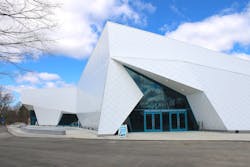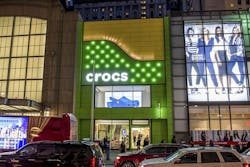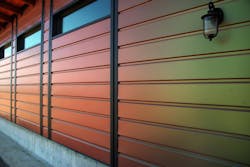Advancements in Materials Open Up Color Trend Possibilities
In hindsight, it’s fairly easy to spot trends in color and design from different decades. Psychedelic yellows and pinks defined the 1960s, while the 70s saw the popularity of earth tones and the 80s were all about pastels.
Forecasting color trends before they happen takes a trained eye and a great deal of research. For paint company color experts like Sue Kim, predicting these trends comes down to understanding people. This means constantly gathering articles and data, going to industry trade shows, and observing patterns in people’s habits and lifestyles.
“Color trend research is always ongoing,” says Kim, a color strategist at Valspar. “We’re seeing more of what’s current on the marketplace and what’s touching our consumer and their mind. What we focus on is the social and economic dynamic that our consumers are experiencing.”
At Valspar, Kim conducts consumer research and releases forecasts on architectural color trends. Each year, consumer lifestyle influences are distilled down into four different color palette stories. Valspar’s four 2017 color trends are Future Lux, Always On, Life in Flex, and Hit Pause.
Future Lux includes grounding shades derived from earth minerals like Rustic Orange or Satin. The Always On palette takes cues from the devices we depend on and includes colors like Gentle Violet and Lazy Gray. Life in Flex embodies bold, expressive colors like Spiced Pumpkin and Pavestone to reflect the blending of work and play. Channeling the idea of digital downtime, Hit Pause includes rich, calming colors like Aqua Mint and Crane Gray.
Along with Valspar, other color authorities such as Pantone release palettes and colors of the year annually based on their own research. A key player in the forecasting world is the Color Marketing Group (CMG), a Virginia-based international non-profit made up of color experts across various industries. CMG provides a forum through workshops and conferences for members to exchange information and identify trends.
“The exchange of information with people that are not from your industry is making our organization so strong,” says Judith van Vliet, vice president of communications and PR at CMG, and a color designer for Clariant Plastics and Coatings in Italy. “It’s really a collaborative organization.”
Van Vliet notes that the pace of color trends varies depending on the country. Smaller countries like the Netherlands tend to have faster-moving trends than larger nations like the United States. Color trends also vary based on the industry and materials used within it. Fashion, for example, has a faster adoption rate of color trends compared to the automotive or architectural industries. “Depending on what products you are putting that color on, it’s not the color that has an expiry date, it’s more the product that you have introduced this color with that has an expiry date,” van Vliet says.
Color trend forecasting in the AEC world brings its own set of practices and nuances. Kim says Valspar tends to forecast out about 8 to 10 years in the commercial building market compared to 2 to 5 years in the residential market. Homeowners often want to switch up the look of their spaces, while buildings such as hospitals have more rigid obligations for how color is utilized.
While the use of color on façades is more common in countries like Italy or Greece than in the U.S., van Vliet says newly constructed buildings in big cities like London and Paris are using color more and more. Iridescent paint is also becoming popular for larger building façades.
As for broader trends to note today, Kim emphasizes the impact of the recent recession, which led consumers to downsize and revert back to the necessities in their spaces. This ‘back-to-basics’ cultural consciousness has contributed to the trending toward grays, neutrals, and minerals in recent years. “Now everyone is being a little bit more real about where they put their money, and that is actually translating into color choices,” she says. “Anything that doesn’t have longevity is sort of rejected.”
So what’s in store for the future of color trends? Kim says new technologies and advancements in materials are opening up the possibilities for new applications for color. To Kim, innovations enable product designers to turn their ideas into reality at a faster pace, impacting the speed of trends.
“There will be constant changes and updates in different shades and sheens and finishes and complex metallics, and all that will be coming in as something fresh and new,” Kim says. “Just like a 3D printer, if you envision it, you can get it.”


